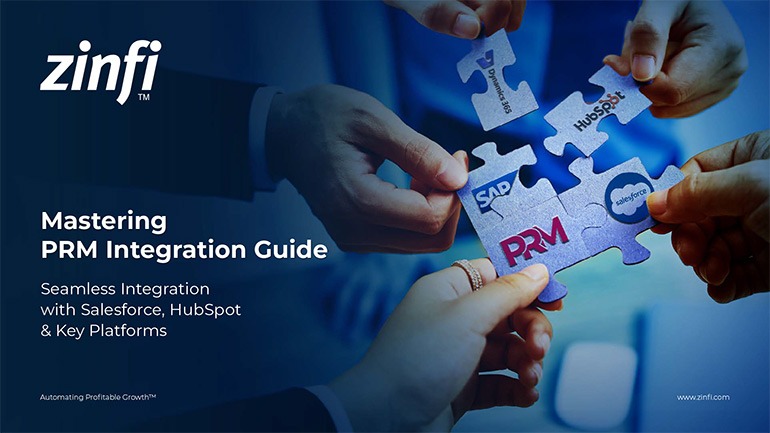Glossary - How to - Partner Portal
How to Create a Partner Portal?
Introduction
Defining a Partner Portal and Its Role in PRM
A partner portal is a centralized digital platform designed to streamline communication, collaboration, and resource sharing between an organization and its partners. These portals provide partners essential tools such as marketing assets, training materials, deal registration, lead management, and sales enablement resources. By offering a structured and accessible interface, partner portals facilitate better engagement, increased sales productivity, and enhanced partner satisfaction.
In Partner Relationship Management (PRM), a well-designed partner portal creates the foundation for automation, ensuring seamless interaction between vendors and partners. Businesses that rely on partner networks—including distributors, resellers, and affiliates—leverage these portals to improve operational efficiency and scale their partner programs effectively.
The Importance of a Partner Portal in PRM
Partner portals play a crucial role in partner management automation, eliminating inefficiencies caused by manual processes. Automated PRM systems integrate key functionalities such as onboarding, training, deal tracking, and analytics, enabling vendors to optimize partner relationships while maintaining visibility across their ecosystem. By implementing a partner portal, businesses can enhance partner engagement, improve brand consistency, and drive revenue growth through a structured and scalable partner management approach.
Key Takeaways:
Establish Clear Objectives for Your Partner Portal
Before creating a partner portal, define the key goals and objectives that align with your business strategy. Consider the following:
- Enhancing partner engagement through seamless communication
- Providing on-demand access to training, marketing materials, and sales resources
- Automating deal registration and lead tracking
- Measuring partner performance through analytics and reporting
By setting clear objectives, you can design a partner portal that effectively meets the needs of both your business and its partners.
Choose the Right PRM Software
Selecting the right PRM software is essential for building a robust and scalable partner portal. When evaluating PRM solutions, look for:
- User-friendly interface for easy navigation
- Customizable workflows tailored to your business model
- Integration capabilities with CRM, ERP, and marketing automation tools
- Automated partner onboarding and training modules
- Security and access control features to manage different partner tiers
A reliable PRM platform, such as ZINFI’s Unified Partner Management (UPM) system, enables businesses to create a partner portal that drives efficiency and engagement.
Design an Intuitive User Experience
An effective partner portal should have the end user in mind. Consider the following best practices:
- Mobile responsiveness for access on any device
- Personalized dashboards displaying relevant insights for each partner
- Simple navigation with categorized sections for training, marketing, and sales tools
- Self-service support options like FAQs, chatbots, and knowledge bases
A well-structured user experience ensures partners can quickly find the resources, reducing friction and enhancing productivity.
Automate Key Partner Management Processes
To maximize efficiency, integrate automation into your partner portal. Some essential automated processes include:
- Partner onboarding: Guided registration and training modules
- Lead distribution and deal registration: Tracking partner-submitted leads and opportunities
- Performance tracking and analytics: Real-time dashboards to measure partner contributions
- Marketing automation: Pre-built campaigns, co-branding tools, and lead nurturing workflows
Automation reduces administrative workload, allowing vendors to focus on strategic growth initiatives.
Continuously Optimize and Update Your Partner Portal
A partner portal is not a one-time implementation but an evolving ecosystem. Regularly update content, improve functionality, and analyze partner engagement metrics to ensure ongoing relevance. Key strategies include:
- Gathering feedback through partner surveys
- Monitoring portal usage analytics
- Updating training modules and marketing assets
- Adopting new technologies and trends in PRM
You can enhance the partner experience and drive long-term success by continuously refining your partner portal.
Summary of Key Takeaways:
Creating a partner portal requires careful planning and ongoing optimization. Here are the main takeaways:
- Define clear objectives that align with your business strategy.
- Choose the right PRM software that supports integration and automation.
- Design a user-friendly interface to enhance partner engagement.
- Automate key processes such as onboarding, lead tracking, and marketing.
- Continuously optimize the portal based on partner feedback and analytics.
Implementing these strategies ensures a robust and effective partner portal that strengthens partner relationships and accelerates business growth.
Industry-Specific Examples:
- Automotive Manufacturing: Automotive manufacturers use partner portals to streamline dealer communications, provide product training, and manage inventory logistics efficiently.
- Consumer Electronics: Consumer electronics companies leverage partner portals to distribute marketing materials, facilitate co-branded campaigns, and support retail partners with sales tools.
- Energy Production: Energy sector businesses use partner portals to manage distributor networks, track regulatory compliance, and facilitate partner-led sustainability initiatives.
- Financial Services: Financial institutions rely on partner portals to onboard brokers, offer compliance training, and automate commission tracking.
- Food and Beverage: The food and beverage industry benefits from partner portals for supplier collaboration, order tracking, and brand consistency management.
- Healthcare Services: Healthcare organizations utilize partner portals for provider education, compliance documentation, and referral management systems.
- Information Technology: IT vendors implement partner portals to manage reseller programs, offer product certifications, and track deal pipelines effectively.
- Pharmaceutical Development: Pharmaceutical companies use partner portals to collaborate with research partners, track clinical trials, and manage distribution channels.
- Retail Industry: Retail businesses implement partner portals for franchise management, product promotions, and customer loyalty program integrations.
- Telecommunications: Telecom companies use partner portals to onboard resellers, support service providers, and distribute product updates efficiently.
Conclusion:
Creating a partner portal is a strategic investment that drives partner engagement, automates management processes, and improves business scalability. By defining clear objectives, choosing the right PRM software, designing an intuitive user experience, implementing automation, and continuously optimizing the platform, businesses can build a partner portal that enhances collaboration and boosts revenue growth. Across various industries, partner portals serve as the backbone of successful partner programs, providing essential tools and resources to maximize channel performance.
Associated Keywords:
- Partner Portal Software
- Partner Management System
- Best PRM Platform















